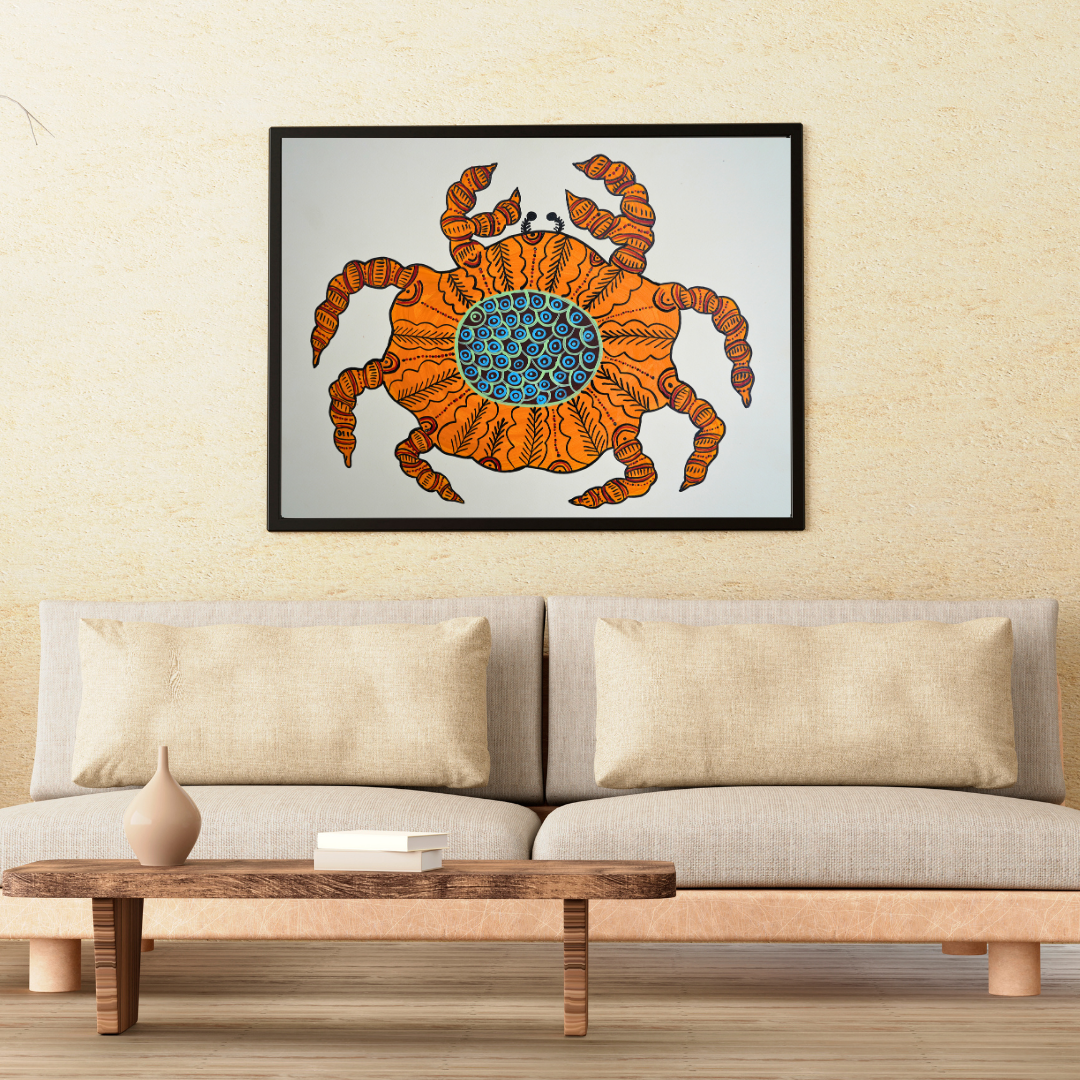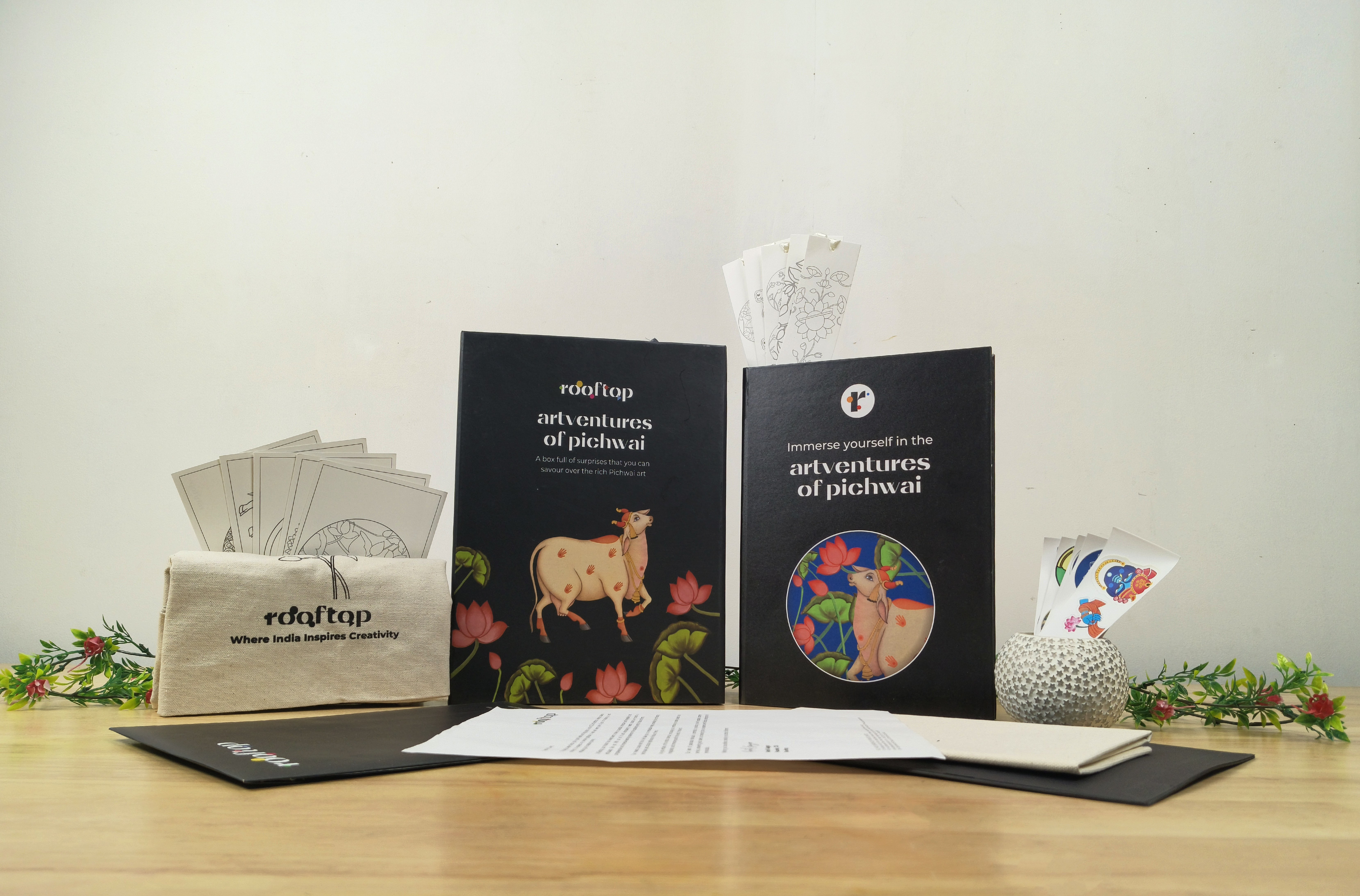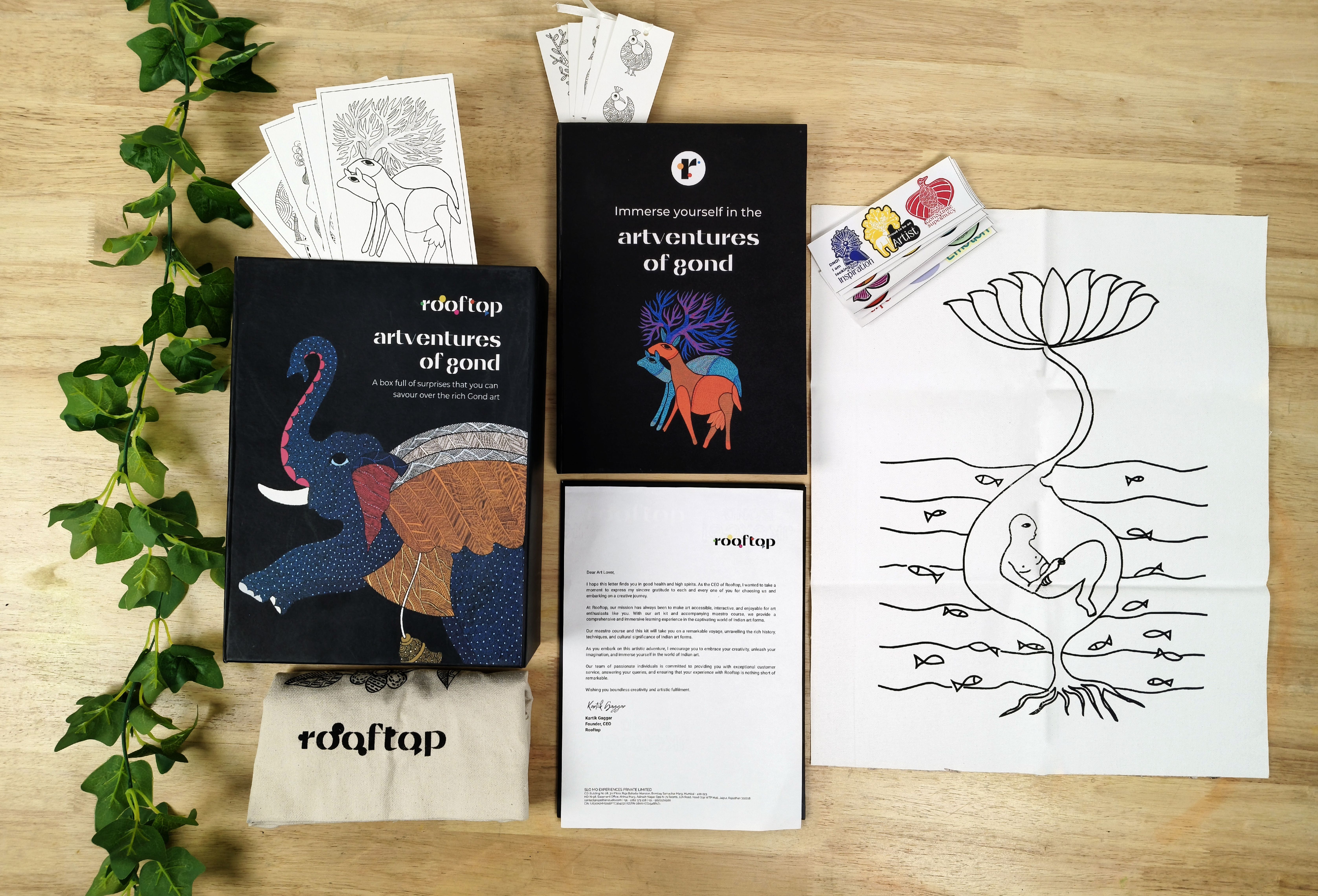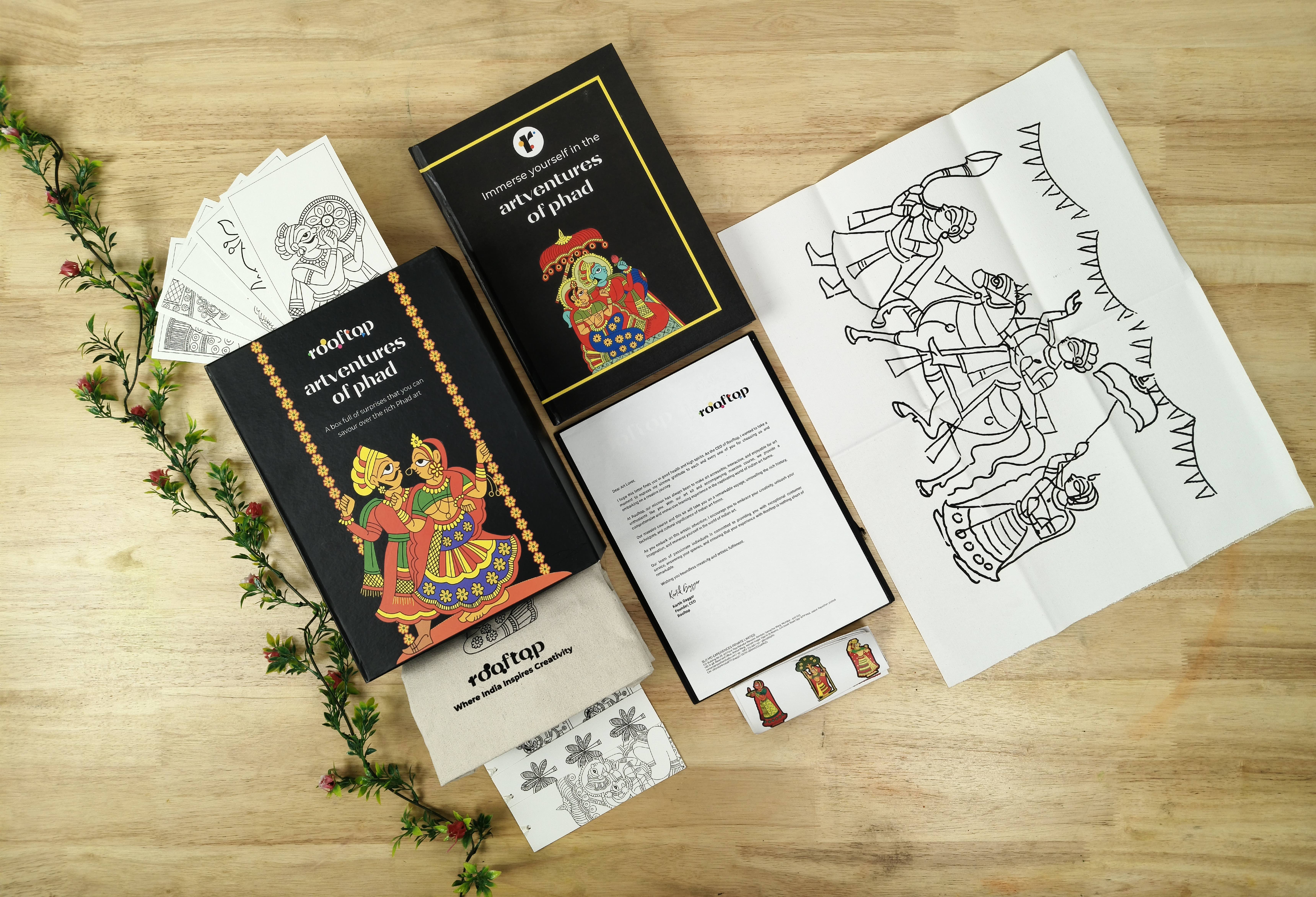Kekdaa
Made to OrderProduct Highlights
In Baiga culture, the crab may symbolize resilience and adaptability, but there is limited direct reference to how the Baiga people specifically interact with crabs in their daily lives. However, like many tribal communities closely connected to nature, they likely use local wildlife, including crabs, in subsistence practices such as fishing or hunting in rivers and forests. The crab’s depiction in art may also represent the tribe's understanding of local fauna and their respect for the ecosystem.
Q: What is Baiga painting?
A: Baiga painting is a traditional art form created by the Baiga tribe in central India. It features nature-inspired designs like animals, trees, and geometric patterns, often symbolizing spirituality and harmony with nature. The paintings are made using natural materials such as clay or rice paste and are used in rituals and ceremonies.
Q: What materials are used in the creation of your Baiga paintings?
A: Baiga paintings are made using white clay, rice paste, and natural pigments from plants and earth. Artists use brushes made from twigs or other natural tools.
Q: How should I care for my Baiga painting?
A: To care for your Baiga painting: 1. Keep it away from direct sunlight to prevent fading. 2. Store in a dry place to avoid moisture damage. 3. Dust gently with a soft cloth or brush. 4. Frame it to protect it from dirt and damage. 5. Avoid touching the painted surface to keep it clean.
Q: Are the paintings framed or unframed?
A: Baiga paintings are usually unframed but can be framed for display and protection if desired.
Q: Can I commission a custom Baiga painting?
A: Yes, you can commission a custom Baiga painting. Many artists are open to creating personalized works based on your preferences, such as specific themes or designs, while still following the traditional style.



